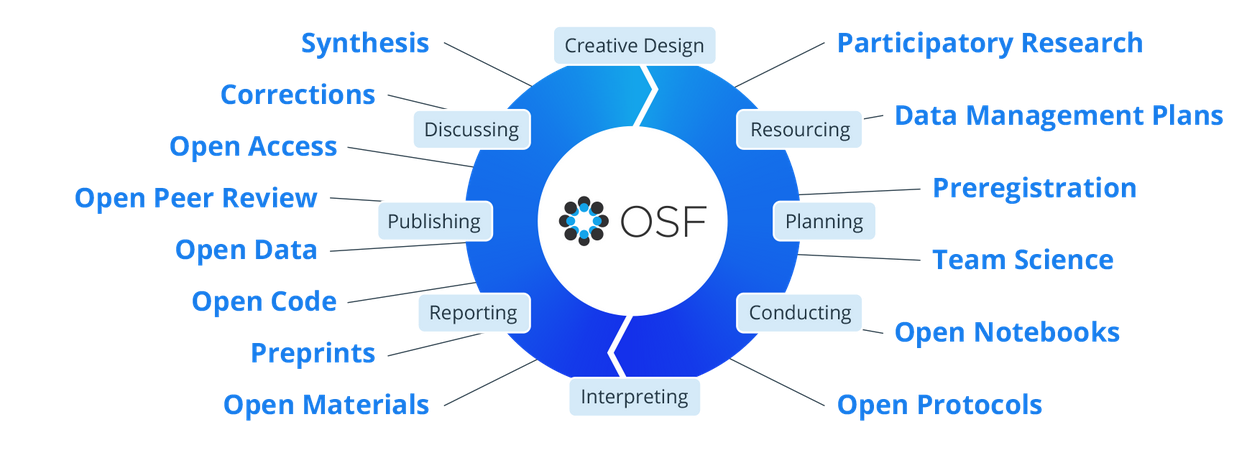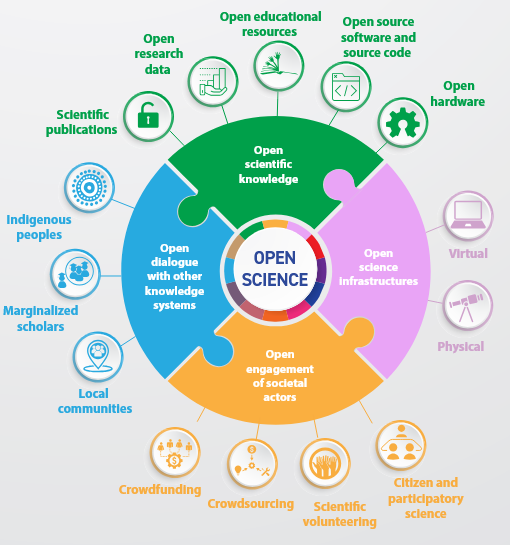Open Research
Open Research is an important movement in research to make it accessible, inclusive, equitable, and sustainable. It is underpinned by principles such as transparency, reproducibility, and collaboration.

Familiarise yourself with the concept of Open Research
-
Open Research is a movement which aims to make scientific research (including publications, data, physical samples, and software) and its dissemination accessible to all levels of society, amateur or professional. It also ensures that the production of that knowledge itself is inclusive, equitable and sustainable.
-
Learn about the University’s initiatives around reproducibility and Open Research, e.g. IAD Open Research hub, library resources/courses (e.g. open research initiatives, Edinburgh Open Research Initiative (EORI, ReproducibiliTea.
-
Learn about wider national or international open research initiatives: Open Science Framework, UK Reproducibility Network, FAIR data.
-
Read relevant publications on open research and/or join journal clubs on the theme (e.g. ReproducibiliTea).
-
Make sure you are informed on and comply with University policies and guidance around research integrity .
-
Be aware that individual funders may have their own policies, guidance and recommendations around open research practices and tools, and you may have to additionally ensure you comply with these.
- UNESCO Open Science Toolkit
- Crüwell, S., van Doorn, J., Etz, A., Makel, M. C., Moshontz, H., Niebaum, J. C., … & Schulte-Mecklenbeck, M. (2019). Seven easy steps to open science. Zeitschrift für Psychologie. https://dx.doi.org/10.1027/2151-2604/a000387
- Kathawalla, U. K., Silverstein, P., & Syed, M. (2021). Easing into open science: A guide for graduate students and their advisors. Collabra: Psychology, 7(1). https://doi.org/10.1525/collabra.18684
- Munafò, M. R., Nosek, B. A., Bishop, D. V. M., Button, K. S., Chambers, C. D., Percie Du Sert, N., Simonsohn, U., Wagenmakers, E. J., Ware, J. J., & Ioannidis, J. P. A. (2017). A manifesto for reproducible science. Nature Human Behaviour, 1(1), 1–9. https://www.nature.com/articles/s41562-016-0021
- IAD guidance on Good Conduct in Authorship & Publication Practice
Apply principles of Open Research to your work

-
Consider your options for access early in the research process, ideally before paper submission. Consider which Open Access options are available to your specific work and whether you can share your data. You should discuss this with your group leader.
-
Data may be published through dedicated open-access publishers or commercial publishers, who publish open-access as well as subscription-based journals. Open Access Publishing is a requirement of many funders and REF.
-
Ensure you comply with funders’ policies relating to Open Access. Many will require a data availability statement detailing how to access your data, software used, or other research materials underpinning your research, and you may need to deposit a copy of your paper in an external repository (e.g. Europe PMC). Some funders have sanctions for non-compliance.
-
Ensure you comply with the University’s Publication & Copyright Policy which applies to staff on research contracts.
-
The University has systems in place to cover Open Access publishing fees.
-
Consider non-peer reviewed formats such as preprints to disseminate your research on an open access server, e.g., openRxiv. A preprint is a full draft research paper that is shared publicly before it has been peer-reviewed. Most preprints are given a digital object identifier (DOI) so they can be cited in other research papers. Benefits include credit, feedback and visibility.
-
Learn about publication bias, and consider when to publish negative findings.
-
Create and use an Open Researcher and Contributor ID (ORCID) and link your publications to your profile.
-
Understand author contributions using CRediT, and appropriately and fairly acknowledge all contributions to a research piece.
- Don’t try to do it all at once - the Buffet approach to Open Science
- Directory of Open Access Preprint repositories
- The pros and cons of preprints (blog)
- Create a persistent researcher digital identifier: orcid.org
- University of Edinburgh CMVM Core Facilities Fair Publication Policy
- IAD guidance on Good Conduct in Authorship & Publication Practice - currently a PDF but online module to be released soon.
- University of Edinburgh – Making your Research Open Access
- University of Edinburgh – Open Access Checklist for UoE Authors
- University of Edinburgh College of Medicine and Veterinary Medicine – Making your Research More Open